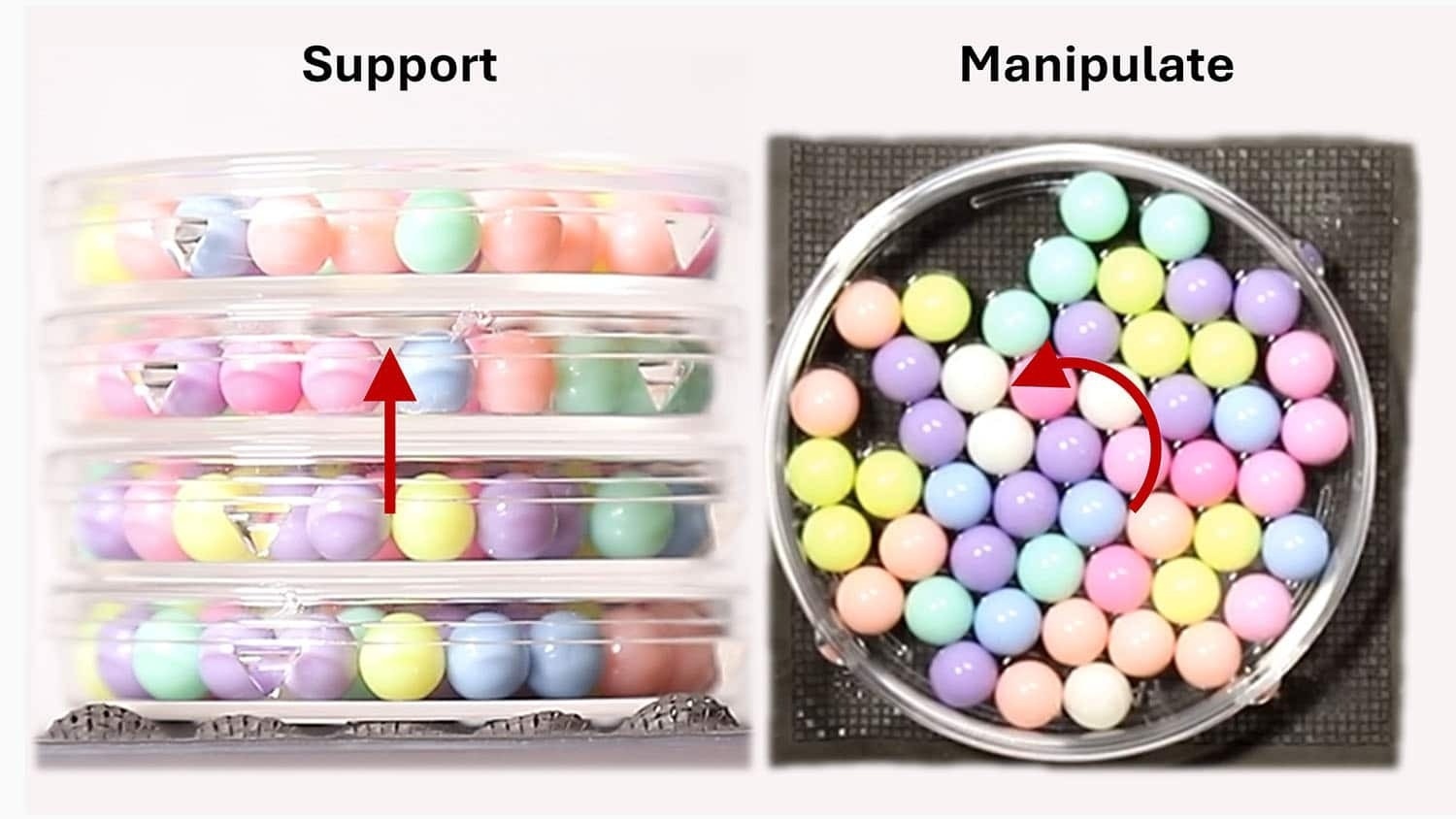Reviewed by Lexie CornerDec 9 2024
Researchers from North Carolina State University have developed a new device that combines magnetic fields with kirigami design principles to remotely control the movement of a flexible, dimpled surface. The study was published in Science Advances.

Image Credit: North Carolina State University
This technology allows the device to manipulate objects without direct contact, making it useful for lifting and transporting fragile objects, gels, or liquids. It also shows potential for use in confined spaces where traditional tools, like robotic arms, may not be practical.
We were trying to address two challenges here. The first challenge was how to move objects that you can’t pick up with grippers, such as fragile objects or things in confined spaces. The second challenge was how to use a magnetic field to remotely lift and move objects that are not magnetic.
Jie Yin, Co-Corresponding Author, Associate Professor, Mechanical and Aerospace Engineering, North Carolina State University
To address these challenges, the researchers created a "metasheet" made of an elastic polymer embedded with magnetic microparticles. A specific pattern was cut into the sheet, and its outer edges were attached to a rigid frame.
By adjusting a magnetic field beneath the metasheet, certain areas can be made to bulge upward or sink downward.
You can actually cause the surface of the metasheet to move like a wave by controlling the direction of the magnetic field. And adjusting the strength of the magnetic field determines how much the wave rise or fall.
Jie Yin, Co-Corresponding Author and Associate Professor, Mechanical and Aerospace Engineering, North Carolina State University
“Controlling the surface movement of the metasheet makes it possible to move many types of objects resting on the surface – whether they’re drops of liquid or a flat piece of glass,” says Joe Tracy, Co-Corresponding Author of the study and a Professor of Materials Science and Engineering at NC State.
Yinding Chi, the first author of the study and a former Ph.D. student at NC State, explains, “The design of cuts on the metasheet are an example of kirigami, or paper-cutting. This is particularly important for the metasheets, because kirigami enhances the flexibility without sacrificing the fundamental stiffness of the material itself.”
Chi, now a postdoctoral researcher at the University of Pennsylvania, adds, “That allows us to amplify the deformation of the material without losing its mechanical strength. In addition, the metasheet is very responsive to the magnetic field, with a response time as fast as two milliseconds.”
There’s been rather little work done on how magnetic actuation can be used in conjunction with kirigami, and what we’ve done here suggests that there’s a tremendous amount of potential for combining these approaches in fields from soft robotics to manufacturing applications.
Joe Tracy, Co-Corresponding Author and Professor, Materials Science and Engineering, North Carolina State University
“We are interested in scaling this approach down, to allow the metasheets to manipulate smaller objects and smaller volumes of liquid,” adds Chi.
“We’re also interested in how this approach could be used to create haptic technologies that may have applications in everything from gaming to accessibility devices,” notes Yin.
The National Science Foundation supported this research through grants 2005374, 2329674, 1663416, and 1662641.
Magnetic kirigami dimpled sheet for morphing and manipulation
Video Credit: North Carolina State University
Journal Reference:
Chi, Y., et al. (2024). Magnetic kirigami dome metasheet with high deformability and stiffness for adaptive dynamic shape-shifting and multimodal manipulation. Science Advances. doi.org/10.1126/sciadv.adr8421.